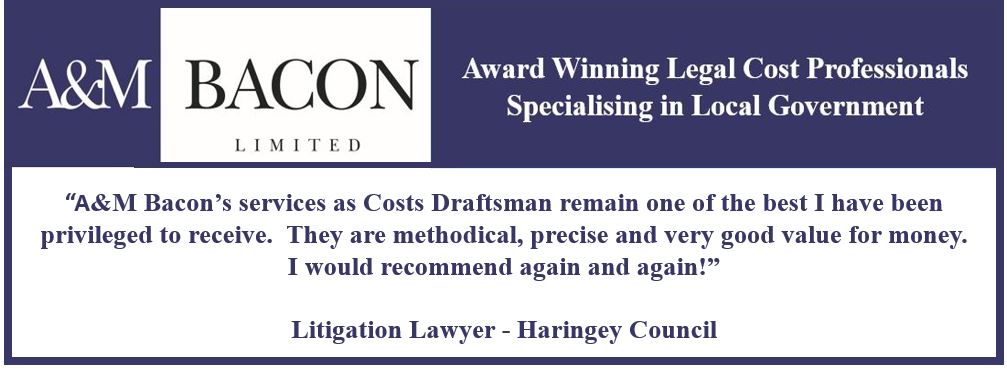The Modern Slavery Act 2015 and local authorities: an update
 Raj Shah outlines important guidance and explains local authorities’ duties to ensure they comply with modern slavery legislation.
Raj Shah outlines important guidance and explains local authorities’ duties to ensure they comply with modern slavery legislation.
Over 1,300 potential victims of modern slavery were referred to the Government’s National Referral Mechanism (NRM) between July and September 2017 – an increase of almost 50% compared with the same period in 2016.
With the Local Government Association (LGA) now actively encouraging members of the public to report signs of potential modern slavery, the role of councils in identifying and supporting victims is greater than ever.
To assist local authorities in complying with their duties under the Modern Slavery Act 2015, the LGA and central Government have published useful guidance.
LGA guidance for local authorities
The LGA and the Independent Anti-Slavery Commissioner have published Modern Slavery: A Council Guide. This useful document reminds councils across England and Wales of the key duties and best practice under the 2015 Act, including:
- The ‘duty to notify’ provision under section 52 of the Act, which requires local authorities to identify and refer child victims and consenting adult victims of modern slavery through the NRM using the NRM form and to notify the Home Secretary of non-consenting or uncontactable potential adult victims using the MS1 form
- The duty under section 43 to co-operate with the Independent Anti-Slavery Commissioner
- Guidance concerning consultation with monitoring officers at each local authority to ensure a coherent approach throughout the organisation, such as incorporating human rights due diligence within procurement practices and supply chains, establishing shared awareness and common goals with suppliers in tackling modern slavery and centrally collating relevant intelligence and information
- Proposals for collaboration with other local authorities and organisations engaged in tackling modern slavery, such as running joint training for council officers.
Updated Government guidance
Central Government has also updated its own guidance in respect of the Act in a revised version of its document entitled Transparency in Supply Chains etc: A Practical Guide. New key points to note include:
- The Home Secretary’s encouragement of organisations caught (see below) to publish a transparency statement compliant with section 54 of the Act (details on this below) even if their annual turnover is below £36m
- Best practice guidance recommending the publication of section 54 statements as soon as possible after the relevant financial year end.
Requirement to publish section 54 transparency statements
Section 54 of the Act requires qualifying “commercial organisations” to publish each financial year on their website a statement detailing the steps they have taken to ensure human trafficking and slavery does not occur within them or their supply chains. Technically, any corporate body (which local authorities are) with an annual aggregate turnover of at least £36m and which provides goods and services within the UK will meet the definition of “commercial organisations” as set out in the Act.
There has, however, been some debate as to whether local authorities, whose annual turnovers exceed £36m, were intended to fall within the scope of this definition. Many have, nonetheless, taken the decision to publish statements on their websites as a matter of best practice.
Local authorities should note that the Modern Slavery (Transparency in Supply Chains) Bill, which had its first reading in the House of Lords in July 2017, would amend the Act to include “public authorities” as falling definitively within the scope of those organisations required to publish section 54 statements. If this Bill were to become law, it would therefore dispel any doubts over the obligation of local authorities to publish section 54 statements.
Councils should further note that the Bill additionally seeks to amend regulation 57 of the Public Contracts Regulations 2015 so that any bidder who meets the definition of “commercial organisation” and has not published a compliant statement would be prevented from participating in a public procurement.
While few private members’ bills become law, there have been indications that the Government agrees with the contents of the Bill and that it plans to introduce its own similar bill in due course. In addition, the aforementioned guidance from the LGA encourages councils to consider publishing them as soon as possible.
The Bill does not propose to modify the sanctions for non-compliance with section 54 of the Act, so the formal enforcement method remains limited to the Secretary of State applying for an injunction requiring the non-compliant organisation to prepare a section 54 statement. While this might be unlikely to happen, it is the reputational damage resulting from adverse publicity which remains the key consequence for non-compliance.
Raj Shah is a solicitor at Sharpe Pritchard. He can be contacted on 020 7405 4600 or This email address is being protected from spambots. You need JavaScript enabled to view it..




